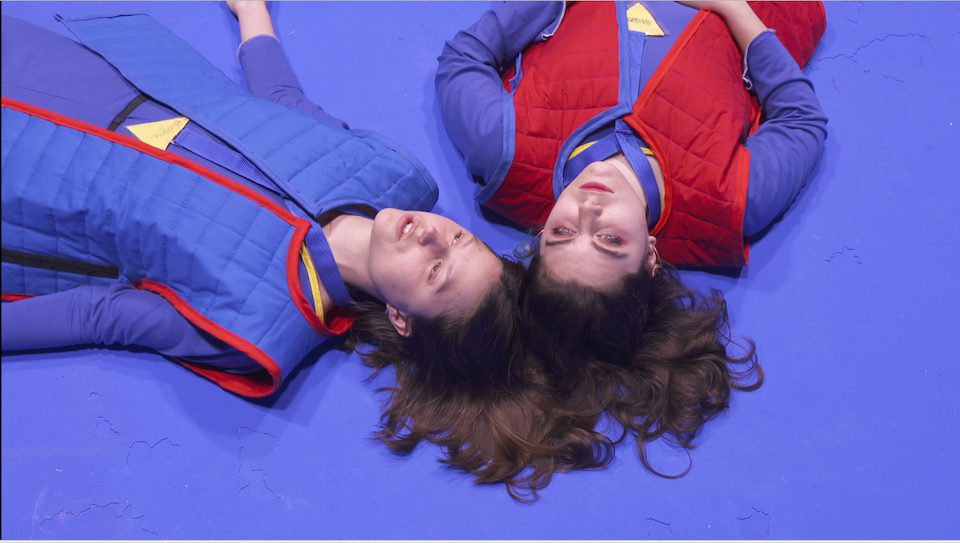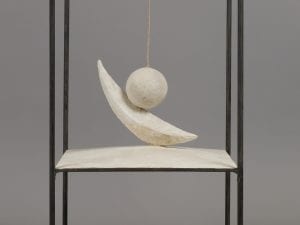From Art Basel to Frieze London, 2021 has seen the return of some of the world’s most popular art fairs. But what do these creative gatherings look like in a post-lockdown world? What can we expect from a new generation of blockbuster events? ArtVilnius is the only contemporary art fair in Lithuania and the largest art event in Eastern Europe. Aesthetica speaks to Sonata Baliuckaite, Artistic Director, to discuss this year’s curated programme and highlights to look out for.
A: How would you describe the world of art fairs during the pandemic? How has it been affected?
SB: Many art fairs – both last year and this year – have been cancelled or haven’t taken place at all. People have really missed travel and a live relationship with art. At ArtVilnius, we believe that fairs are the best places to discover the world of galleries, which has been frozen for a long time. Because there have been far fewer events during the pandemic, artists have had time to create new works. Both galleries and artists will surprise us this year; we will see many new works of art from as many as 12 countries.
A: What is the main highlight of this year’s fair?
SB: One of the most important highlights of ArtVilnius21 is the contemporary art on paper (drawings, collages, graphics, etc). For years, drawings and works of art on paper have occupied an important place in the global art market; paper is a medium used by almost every artist. Of course, as with every year, all media will be represented: painting, photography, sculpture, video, installations and more.
A: Tell us more about the programme, which will feature 55 galleries. Will there be some new names?
SB: New ambitious galleries are emerging in Lithuania, some of which will be at ArtVilnius. We support young initiatives and even offer special conditions for new galleries. It is a pleasure to offer our visitors work from a variety of countries: France, Italy, Denmark, Germany and, of course, our neighbouring countries Latvia, Estonia and Ukraine.
A: This year, the exhibition Takas has a new curator. What’s special about this particular curated show?
SB: Takas is an international exhibition of sculptures, installations and performances curated by us and gaining great popularity every year. At the very beginning of the fair, in 2009, it was curated by art critics Dr. Raminta Jurėnaitė and Dr. Elona Lubytė. This year’s exhibition was curated by me. We also invited a young curator, Vytenis Burokas. Every curator has their own vision; it’s interesting to watch how one curator selects one artist, and next year the same artist may not be included. It is very important to show diversity at the fair, and to reflect trends in the art world.
Over the past 12 years, the exhibition has grown and become full of video, performance, sound, and light installations. Takas gets a lot of attention from visitors, collectors and even participating galleries, who discover new artists and unexpected works. One of the most successful stories is the installation Garden by Rafal Piesliak, who participated in Takas last year. It was later donated to the city of Vilnius.
A: You will present a number of impressive art collections in the project area. Maybe you could single out a few?
SB: There are many curated exhibitions in the ArtVilnius programme. Since 2013, we have presented curated collections from museums and foundations alongside solo and group exhibitions by famous artists. Our project area is truly exceptional on the scale of global fairs. Few of them have this kind of non-commercial space to introduce visitors to world-famous projects.
I am pleased with our long-term partnership with the Lewben Art Foundation, which is very ambitious and progressive. This year, they present the NFT exposition How Soon is Tomorrow: Collecting NFTs. Among the artists presented are Robertas Narkus from Lithuania and Estonians Tommy Cash and Katja Novitskova. The Krakow Museum of Contemporary Art Mocak presents the most outstanding contemporary Polish artists every year. There is also an impressive installation by SetPStanikas, who lives between Paris and Vilnius, and an installation by Jurgis Paškevičius, presented by the Vilnius Contemporary Art Centre. Jonas Mekas Visual Arts Center will commemorate the 60th anniversary of the Fluxus movement and the 90th birthday of George Maciunas.

A: At the fair, you will present a number of sustainable solutions, such as an e-catalogue and 3D tour. Do such solutions work? Can digitisation change the perception of a work of art?
SB: We need to make these sustainable decisions – not only because of ecology – but also for the convenience of visitors, and for increasing the accessibility of art. Thanks to digitisation, perceptions of art – as well as the wider world – have inevitably changed, and so has people’s relationship with the environment in general. Art fairs are not only “art shops”, but meeting places where you can experience art and connect with an artist or gallerist.
Of course, opera and theatre productions have been broadcast in cinemas or on television screens for many years. These genres, which have existed for centuries, still attract music lovers to the halls. These live experiences will not be replaced by screens. I believe that in order to experience, feel, smell, hear and touch art, people need to see it in real life. Therefore, we have not considered organising a digital fair, as there are already many art dissemination platforms that have a huge selection of art. Art fairs are a different format.
A: To conclude, do you collect art yourself and what aspects do you consider?
SB: I wouldn’t call it collecting, but I try to buy works of art I like, mostly by young artists. At home, I have paintings, drawings, photographs and several objects. Among my favourites are drawings by famous Lithuanian artist Gintaras Makarevičius, and objects by Estonian sculptor Maarit Murka. I like abstract art, specifically minimalist pieces. When it comes to sculpture, it’s often the material that catches my eye.
ArtVilnius21 runs 15-17 October. Find out more here.
Image Credits:
1. Karolis Vaivada, Be pavadinimo.
2. Dovilė Dagienė-DoDA, Augalų atmintis, Plant Memory. Represented by: VILNIAUS FOTOGRAFIJOS MENO CENTRAS 7:14.
3. Emilija Petrauskienė, tw2 x Mf13. Represented by: VILNIAUS FOTOGRAFIJOS MENO CENTRAS 7:14.
4. Béguin Maureen, Mmmmm. Represented by: GALERIE NIVET-CARZON.







